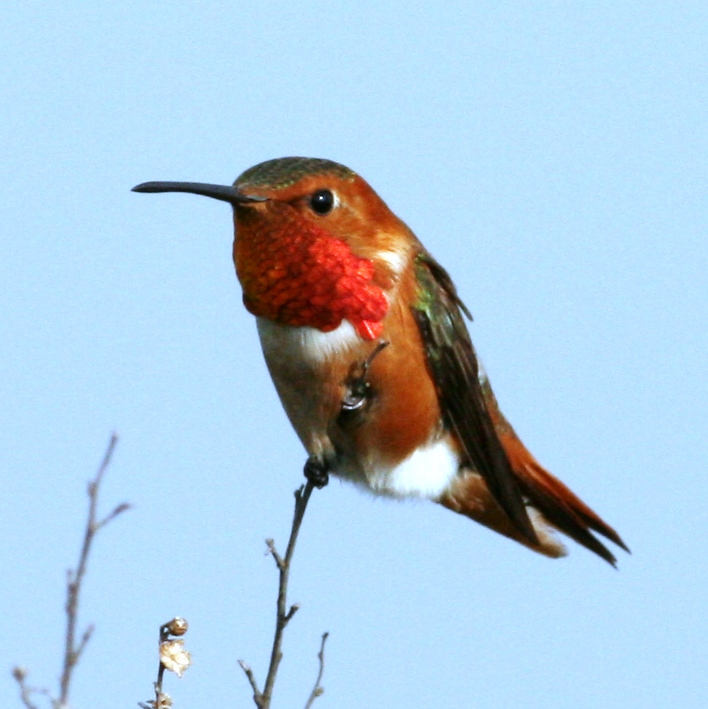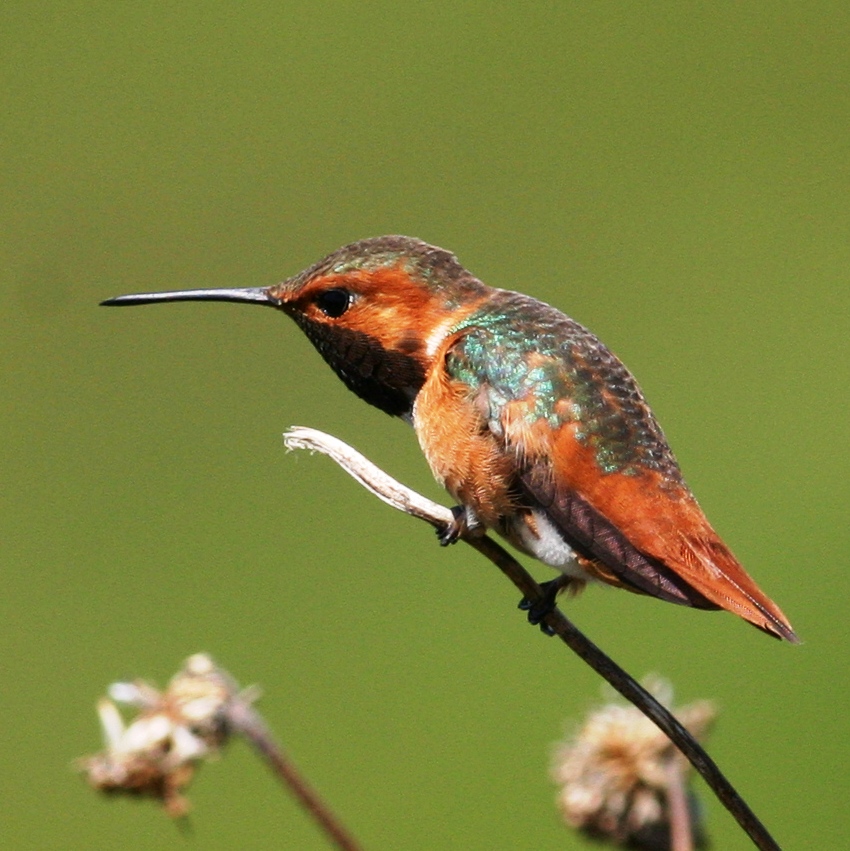Allen's Hummingbird (Selasphorus sasin)

Allen's Hummingbird, male - Rancho Cucamonga, CA © Tom Benson

Allen's Hummingbird, male - Newport Beach, CA © Tom Benson
The Allen's Hummingbird is a rare to uncommon visitor and perhaps resident campus, although its status is complex. There are two subspecies of Allen's Hummingbird. Selasphorus sasin sasin is a migratory subspecies that migrates through the foothills and mountains in January-March and June-August. Selasphorus sasin sedentarius is a sedentary subspecies that is a common breeding resident on the coastal slope of southern California. It has steadily been expanding its range inland, and is probably now resident in small numbers in San Bernardino.The adult male Allen's Hummingbird can be identified by its red gorget (iridescent feathers on the throat), bright rufous head and sides, green back, and mostly white underparts. Females and immature males differ from adult males by having an iridescent green crown and upperparts, and a white throat with variable golden-red iridescent spotting. Female and immature male Allen's Hummingbirds are nearly identical to female and immature male Rufous Hummingbirds (Selasphorus rufus), which are uncommon migrants through the area. For this reason, females and immature males are often referred to as Rufous/Allen's Hummingbirds where the two species overlap in distribution.